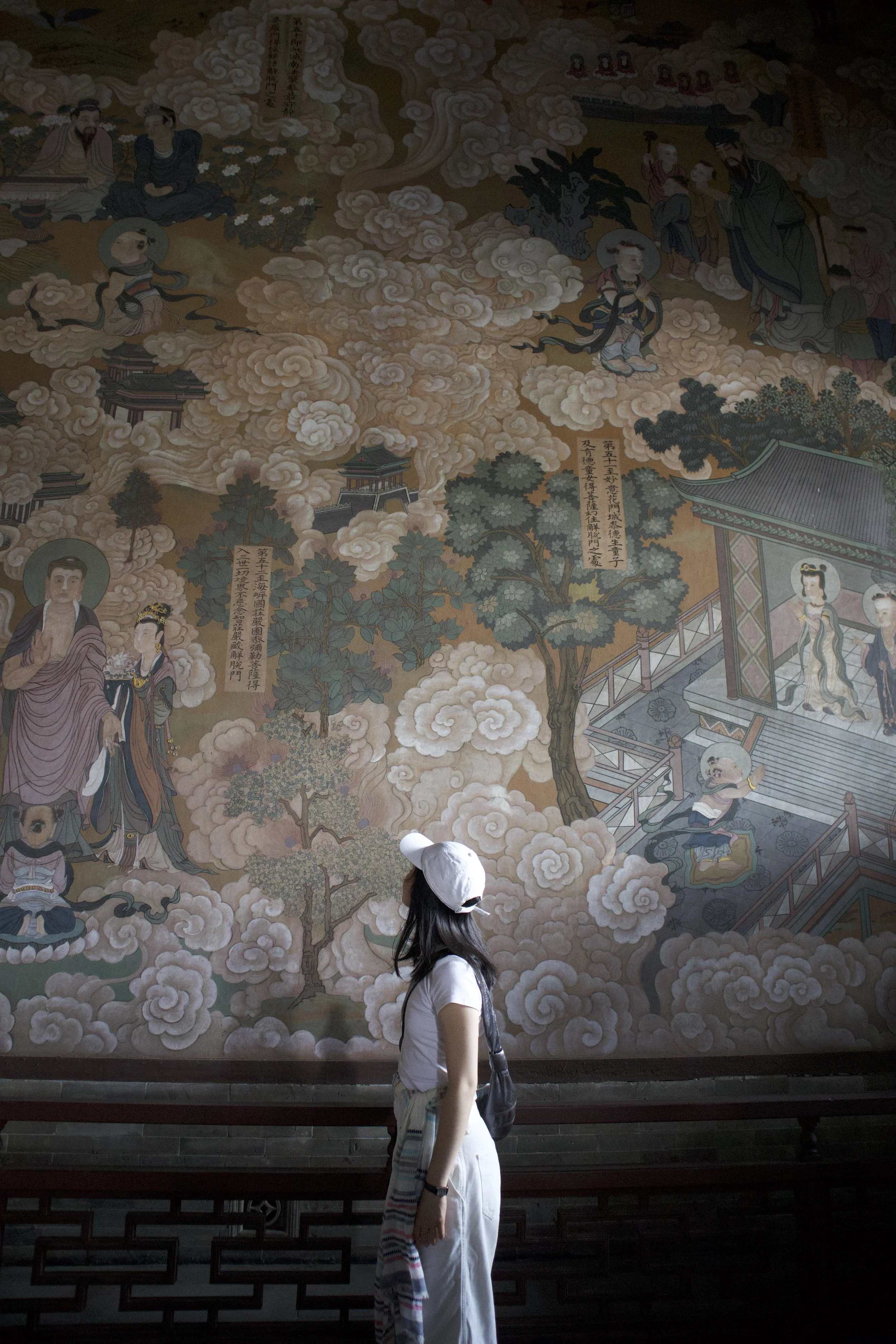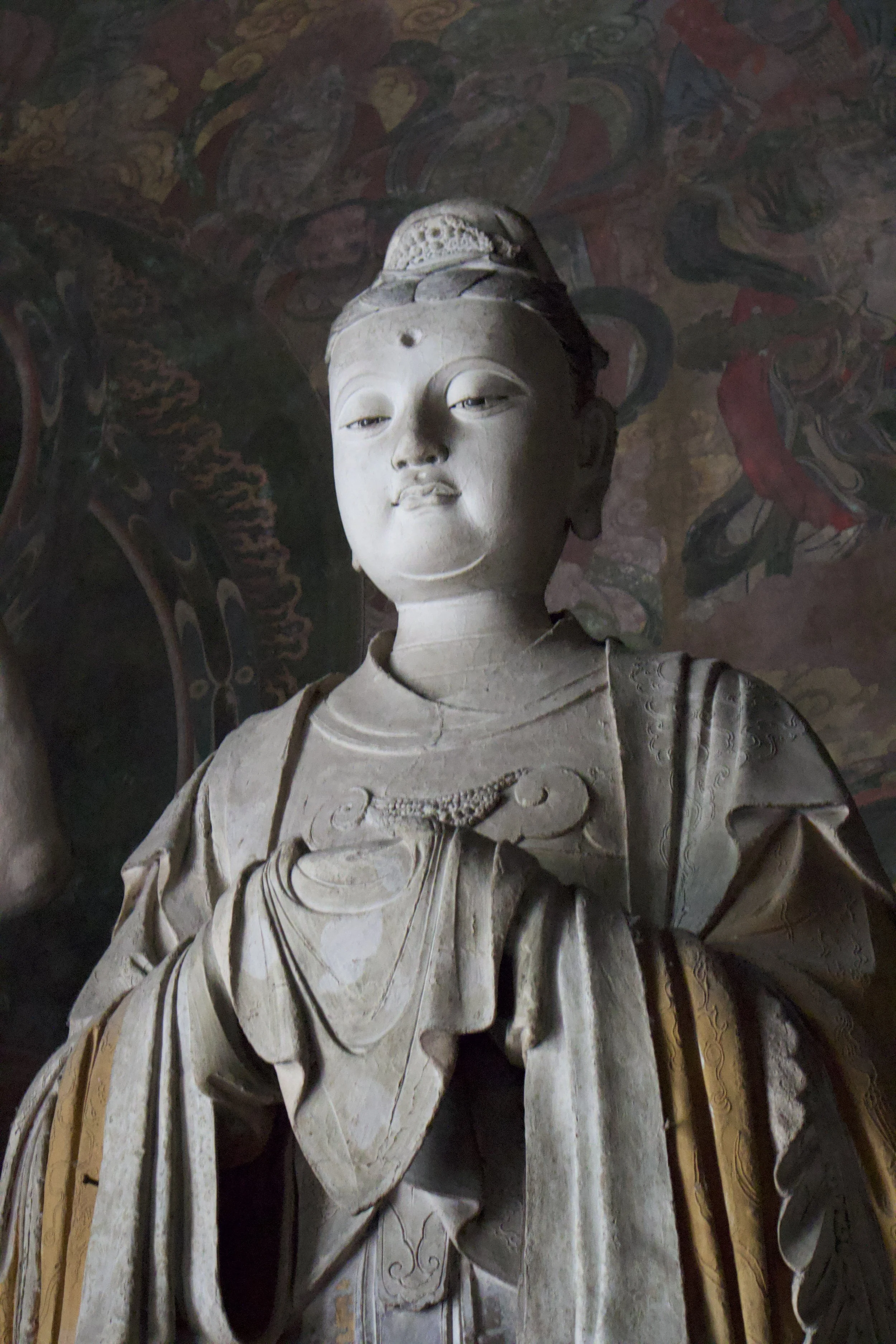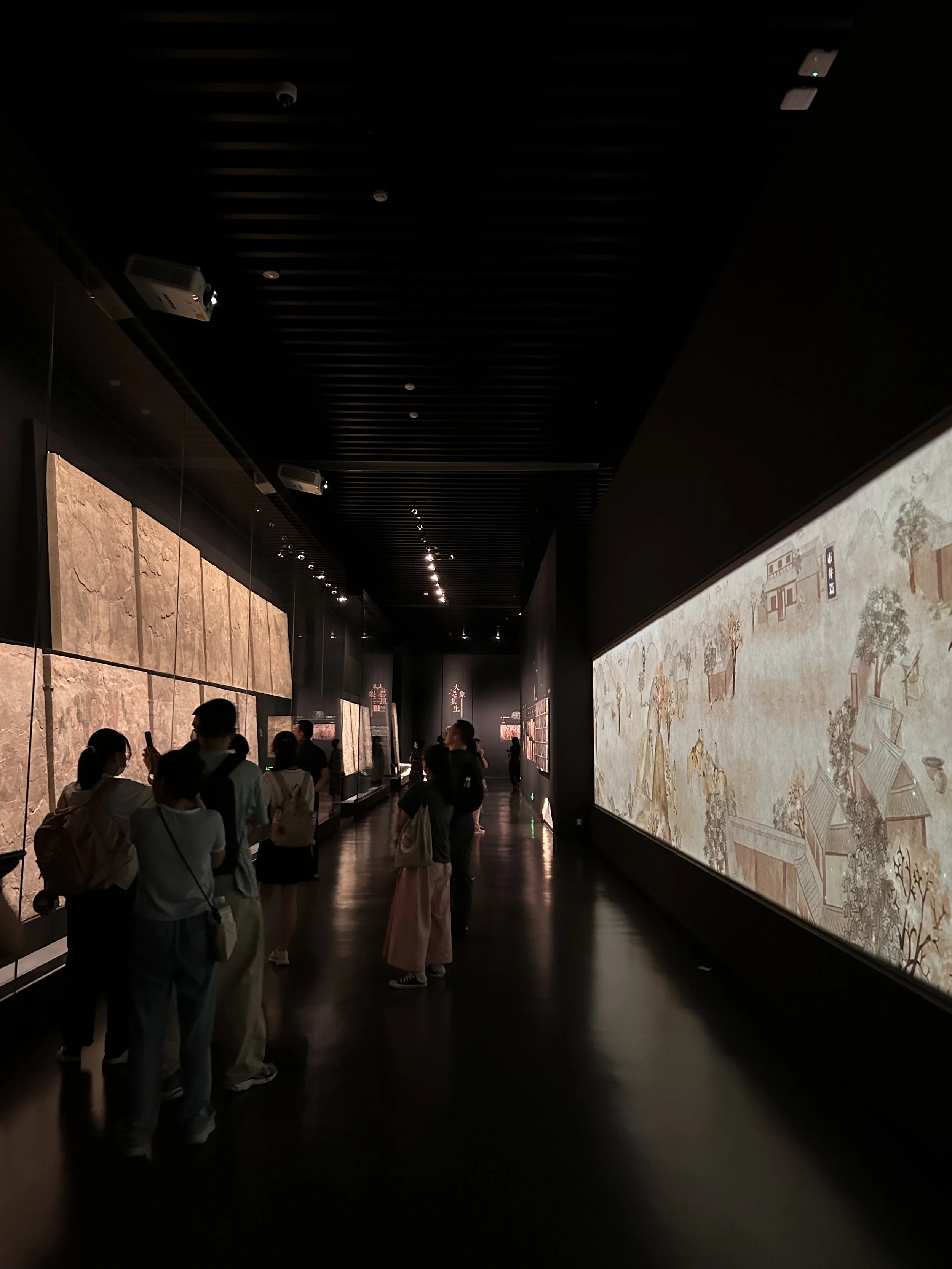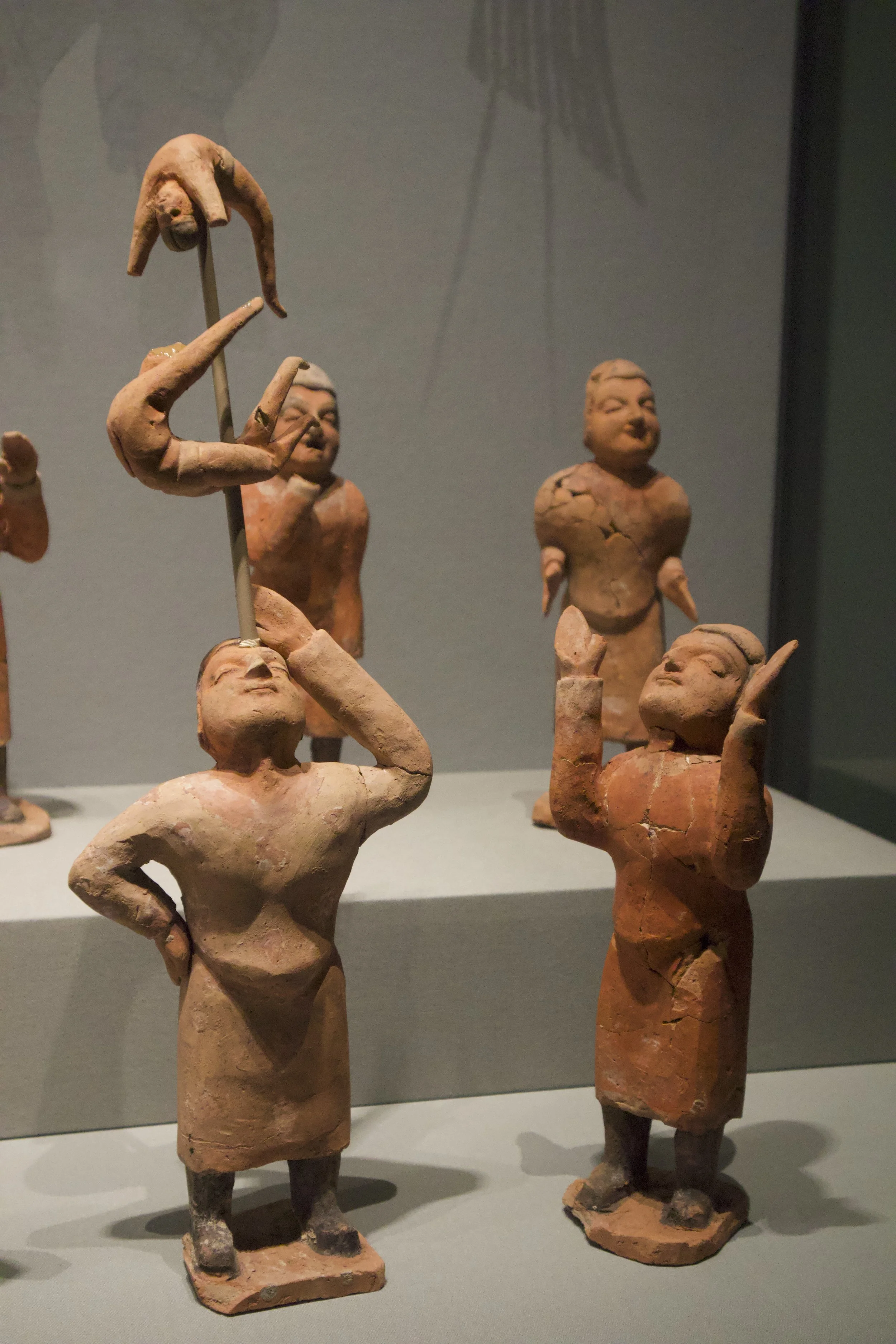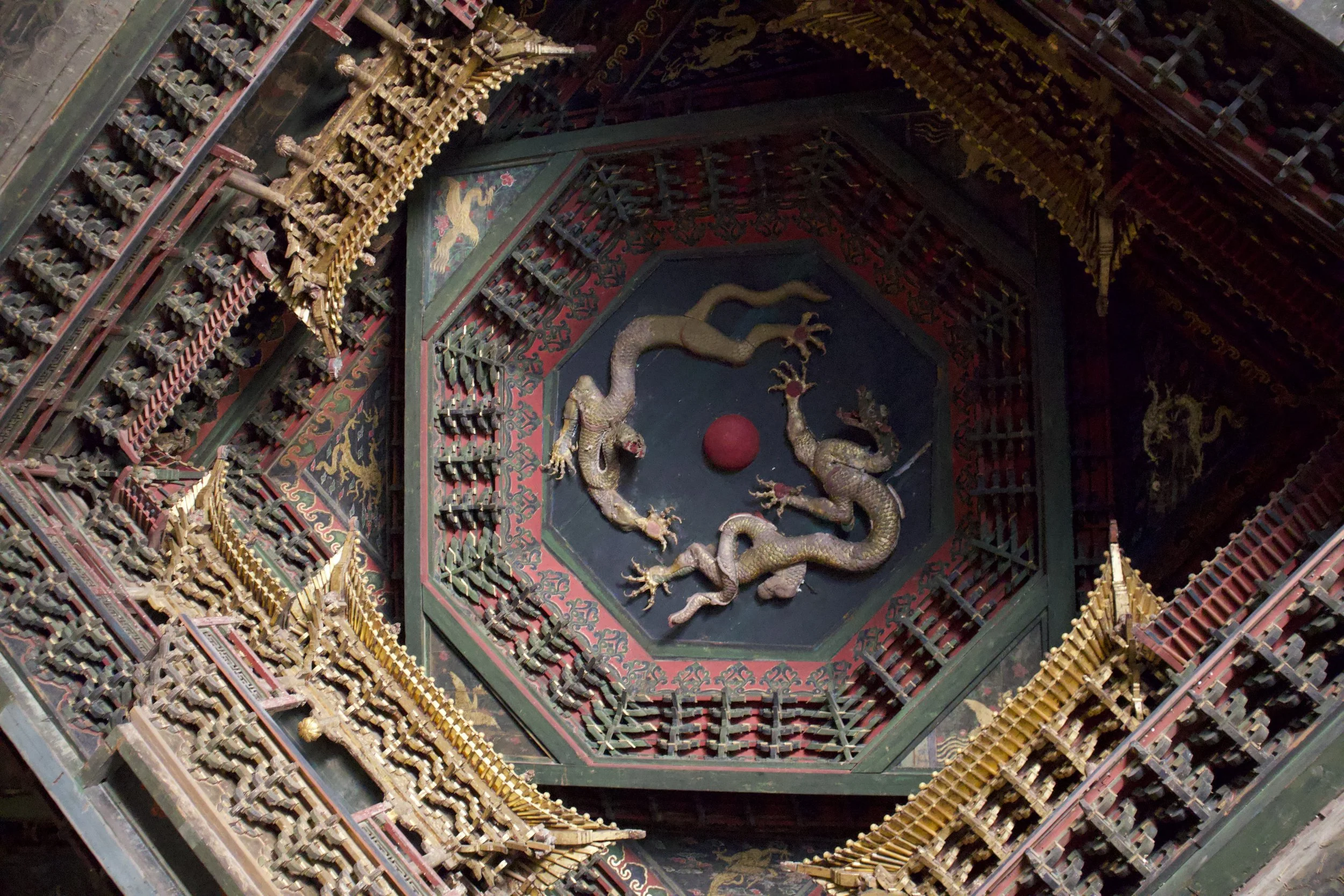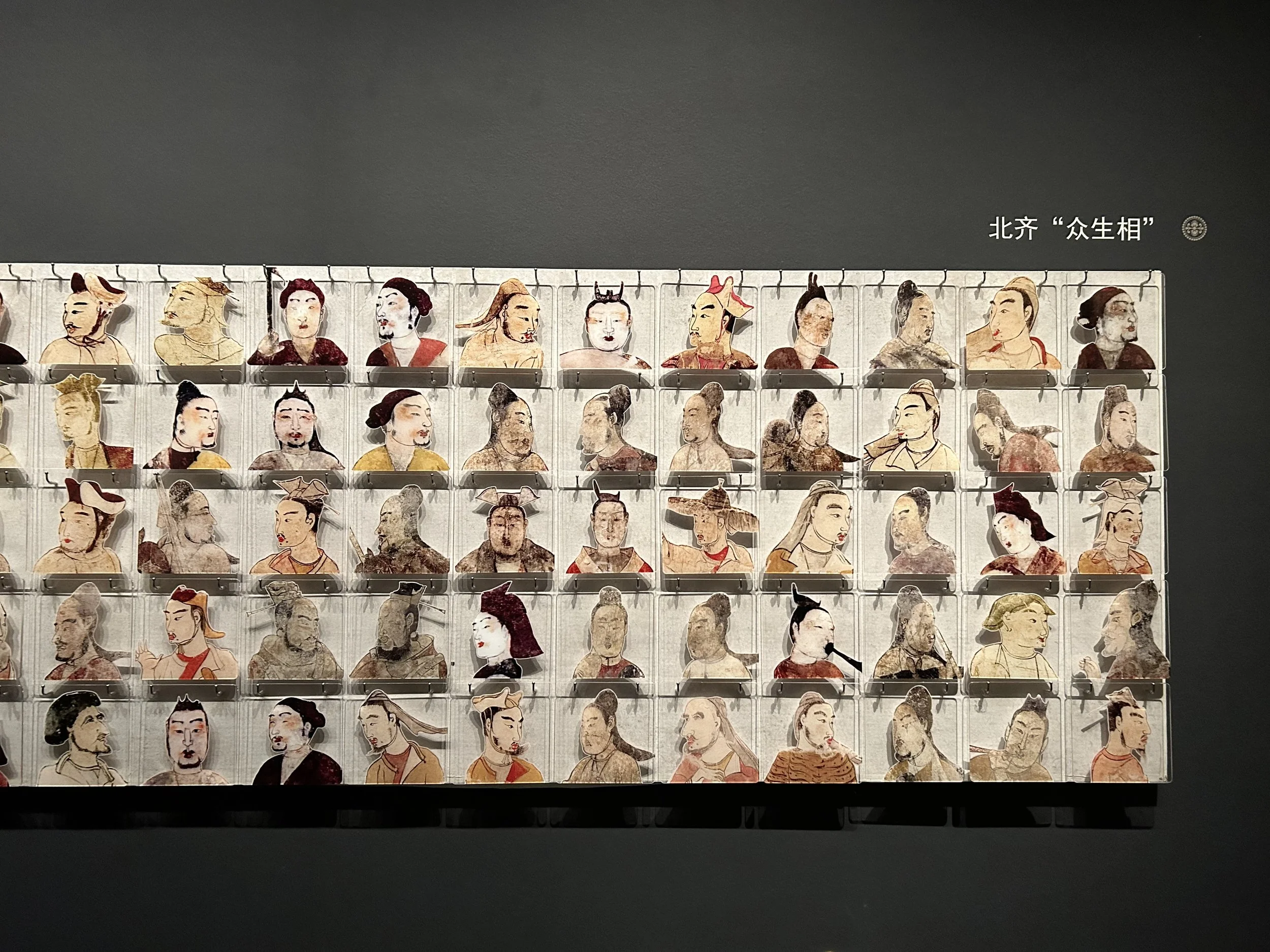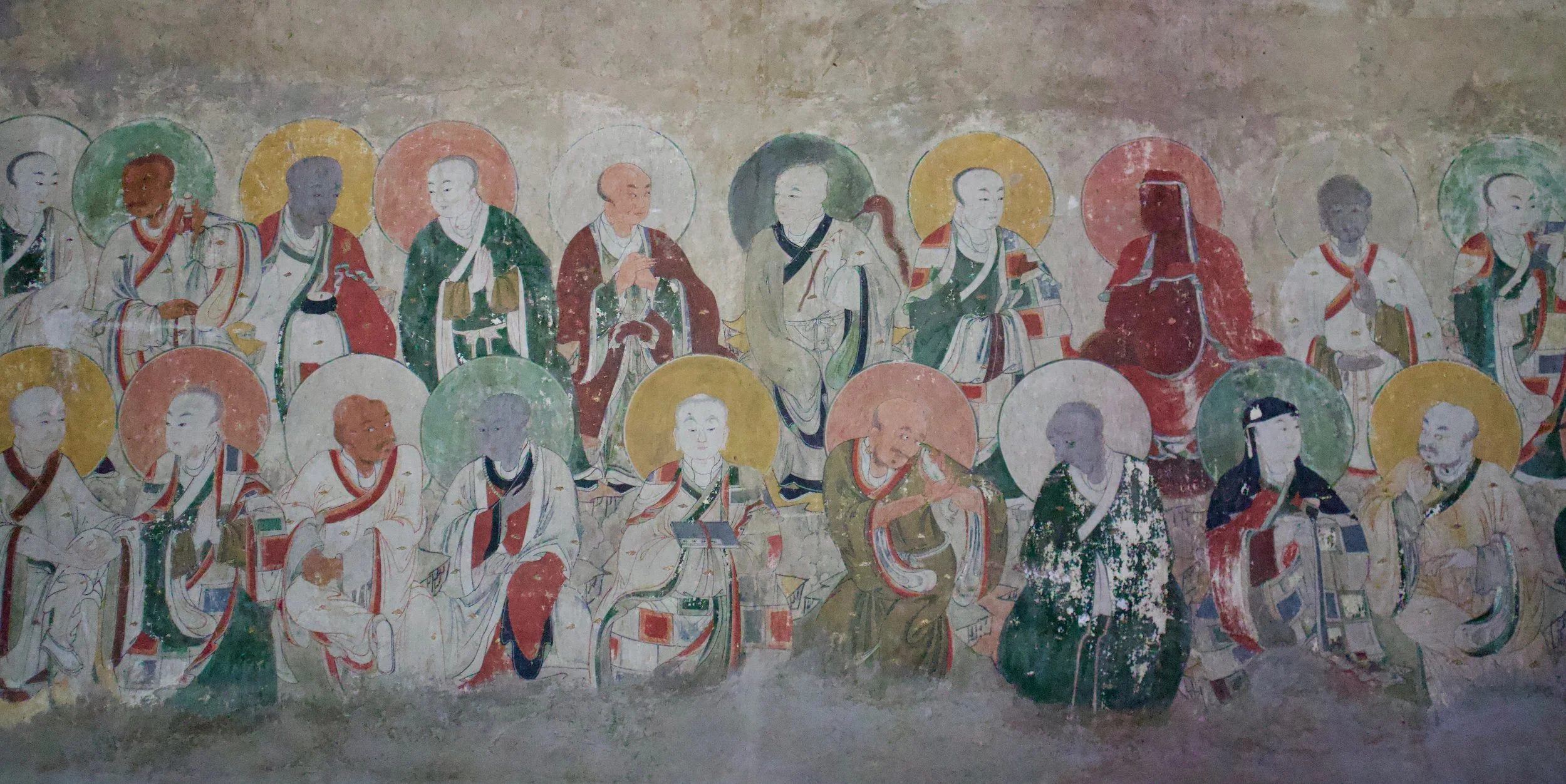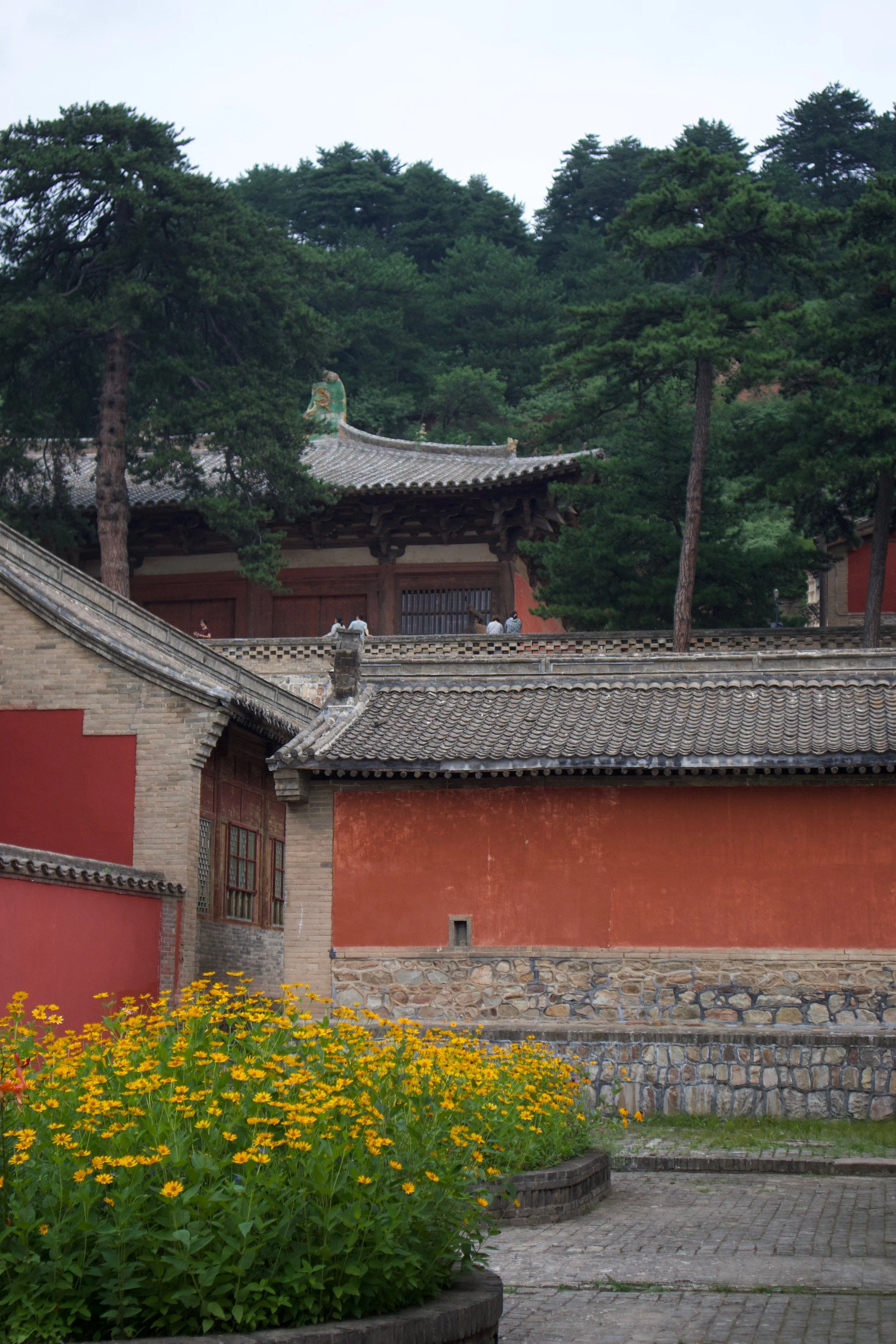Shanxi is one of China’s richest regions for ancient architecture, home to some of the world’s oldest surviving wooden buildings, many dating back to the Tang and Liao dynasties (7th-11th centuries). My curiosity about this region was first sparked, unexpectedly, by a video game. Last year’s release of Black Myth: Wukong drew inspiration for its character designs and animations from Shanxi’s temples, murals, and myths.
So in July, despite the heat, I was excited to see these ancient architecture and sculptures for myself. Coming from humid Guangdong, the moment I stepped off the plane in Taiyuan and felt the cool breeze, I understood why Shanxi has long been the place to escape the summer heat.
Before this trip, I knew little about Chinese architecture. The complexity of its forms and symbolism felt daunting—where do you even begin to understand structures and stories layered over a thousand years?
Huayan Temple (photo credit to Bonnie Luo)
Shanhua Temple (photo credit to Bonnie Luo)
Over a week, we traveled from Taiyuan to Xinzhou, then on to Wutai Mountain, Dai County, and finally Datong—still, barely scratching the surface of Shanxi’s hundreds of temples. Even the humblest towns are full of surprises: towering wooden pagodas or pavilions suddenly appearing around a corner, whose plaques and rooflines still carry centuries of meaning. Shanxi’s wooden architecture, especially from the Tang dynasty, stands apart for its simplicity and weight, in contrast to the ornate, colorful style of the later Ming and Qing periods. Traveling with a design researcher lens, here are my field notes along the way:
1. The living structures in wood
Why does Chinese architecture prefer wood, while Greek architecture relies on stone? This is the first question I remember from architectural history classes, one of the key Eastern and Western architectural differences.
Wood, in Chinese architectural philosophy, is alive. It breathes with the seasons, ages with time, and can be renewed through repair. Architecture here was never meant to be fixed forever; it was dynamic, evolving with each restoration. This stands in sharp contrast to Greek architecture, which sought eternal perfection through geometric order and the “golden ratio” carved in stone.
This philosophical difference further shaped what survives today. China’s wooden temples often vanished, leaving behind underground tombs and burial goods, including terracotta warriors, ritual bronzes, jade, as symbols of lineage and contuity of the afterlife. Greece’s legacy, by contrast, lies above ground: temples, sculptures, and civic spaces celebrating the connection between gods, heroes, and people rather than personal afterlives.
Northern Qi mural museum
Shanxi museum
2. Temple design varied by Buddhist schools
Temples once carried the collective imagination of the people, and interestingly, their decorations reflect the visions of different Buddhist schools. Jingtu Temple in Yingxian, for example, embodies Jingtu (“pure land”) school’s belief in chanting and visualizing the Western Paradise. The temple designers translated their vision of that paradise into the caisson ceiling: layers of lavish, ornate patterns that resembles heavenly palaces.
Other temples, shaped by different Buddhist schools, favored simpler designs, highlighting special alteration for arhats or bodhisattvas instead. In modern terms, a temple’s layout is essentially the “experience design” for visitors: guiding them through rituals like incense offering, alms, vegetarian meals, and evening chants. Both worshippers and deities are “users” of the space, where the temple serves as the space that connects them.
Ying county Jingtu Temple (photo credit to Bonnie Luo)
3. God-centered design
In modern design, we talk endlessly about “human-centered” principles. Yet Shanxi’s temples are unapologetically “god-centered.”
For example, in Jinci Temple, I was initially confused by the theatre placement in the garden—until I learned it was built to perform for the gods, not for people. Many doorways frame views intentionally, so deities inside the halls “see” visitors passing by and the landscapes beyond. For humans, these thresholds mark the shift from worldly life to sacred ground, creating a quiet, layered approach to the divine.
Though built for gods, these spaces inevitably reflect human imagination—our hopes for what a divine life might be. Since no one could “interview” the gods about their preferences, like modern day user research does, temple builders were essentially making an audacious guess—what if gods don’t actually live in palaces above the clouds or dine on peaches of immortality?
Shanhua Temple door frames (photo credit to Bonnie Luo)
4. Cosmopolitan blending Chinese, Indian, and Persian
Another surprise was just how global Shanxi once was. During the Northern Wei dynasty, from the 5th century onward, Chinese, Indian, and Persian influences converged here through the Silk Road. You see it in murals, decorative motifs, and sculptures in grottoes and temples: lotus patterns alongside Persian glassware, Central Asian instruments carved into reliefs.
Merchants brought silver, glass, and new artistic styles to Pingcheng (now Datong), influencing everything from clothing to music. This multi-cultural vibrancy echoes globalization in the early 20th century, where trade, migration, and cross-cultural conversations binding distant worlds together.
Diversity of ethnicities in Shanxi identified from murals in the Northern Qi Mural Museum
Appendix
5. How did Buddhism localize in China?
At the Shanxi Museum, I learned that Buddhism first arrived in China during the Wei–Jin and Northern–Southern dynasties (220–589 CE), when Datong served as the capital. Amid war and upheaval, people embraced Buddhism for its promise: endure suffering in the present life could lead them to heaven and happiness in the next life.
As Buddhism localized in China, its art also transformed. In the Yungang Grottoes, for example, Buddha statues began wearing Han-style robes instead of Indian monastic garb, making them more relatable to local audience. It’s cool to see that the way to localize and build trust and connection with new audiences are very much the same as today from thousands of years ago—even gods, it seems, must adapt to be understood.
Arhats in morandi colors in Foguang Temple (photo credit to Bonnie Luo)
6. Spring/Summer collection: Arhats in Morandi Colors
Of all the temples we visited, my favorite was Foguang Temple near Wutai Mountain. The building itself is simple and quaint, tucked deep in the mountains, its courtyard quiet and lush with pine trees. Stepping inside, my mind felt quiet instantly. In the East Hall, vivid arhat statues come to life with expressive faces and draped robes in soft, muted hues. It’s fun to see that artisans centuries ago already understood the subtle “Morandi” hues of spring and summer, rendered alive in clay and pigment.
Foguang Temple (photo credit to Bonnie Luo)
